Greece is a dream destination for travelers, a land where ancient history, vibrant culture, and breathtaking landscapes converge to create unforgettable experiences. From the iconic whitewashed villages of Santorini to the spiritual monasteries of Meteora, Greece offers a tapestry of beauty that captivates the senses.
As a solo traveler who has wandered through 19 countries, I’ve explored Greece’s most stunning locales and compiled this detailed guide for first-time visitors. This article will equip you with everything you need to plan an unforgettable trip, including must-see destinations, practical tips, and insights into respecting local customs.
Whether you’re drawn to the turquoise waters of the Ionian Sea, the ancient ruins of Athens, or the serene cliffs of Zakynthos, Greece has something for every adventurer. Let’s dive into the most beautiful places in Greece, complete with actionable advice to make your journey seamless and inspiring.
1. Santorini: The Jewel of the Aegean
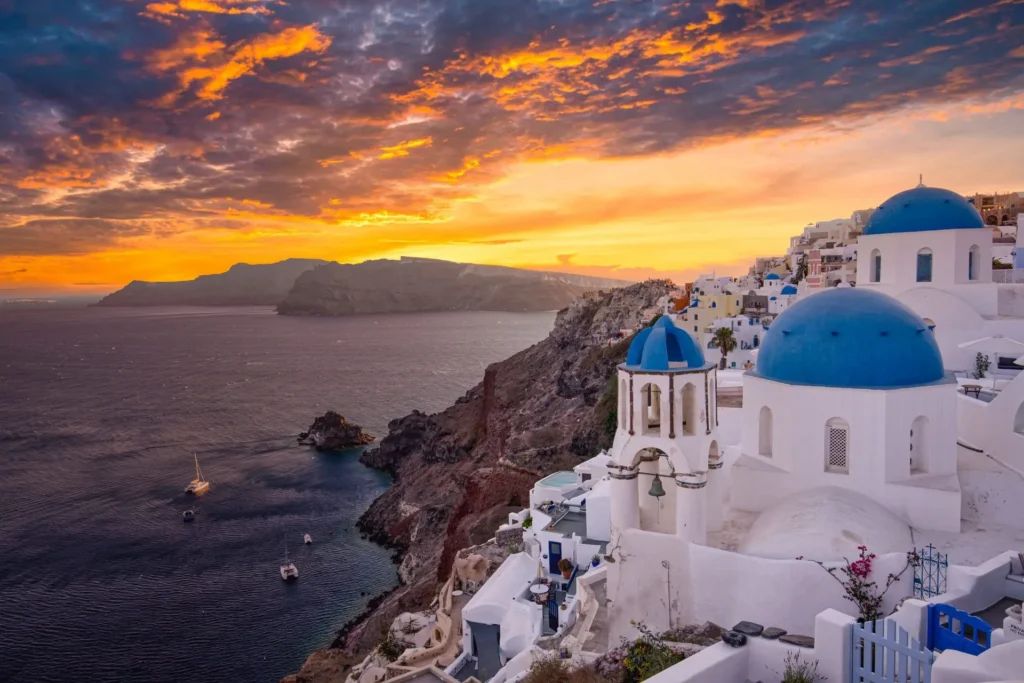
Santorini is arguably Greece’s most iconic destination, a postcard-perfect island with whitewashed buildings cascading down cliffs against the backdrop of the deep blue Aegean Sea. Formed by a volcanic eruption thousands of years ago, its dramatic caldera, vibrant sunsets, and unique volcanic beaches make it a must-visit.
Why Visit Santorini?
Santorini’s beauty lies in its striking contrasts: white architecture against black volcanic cliffs, vibrant bougainvillea against azure waters, and bustling towns juxtaposed with tranquil beaches. It’s a destination that feels like stepping into a painting, perfect for first-time visitors seeking romance, relaxation, or adventure.
Must-See Spots in Santorini
- Oia Village: Famous for its sunset views, Oia’s narrow streets are lined with blue-domed churches, boutique shops, and cafes. Arrive early to secure a spot for the sunset, as crowds gather to watch the sky transform into hues of orange, pink, and purple.
- Fira: The island’s capital, Fira is a lively hub with cobblestone streets, restaurants, and the Archaeological Museum of Thera, which showcases artifacts from the island’s ancient past.
- Red Beach: Known for its striking red sand and cliffs, this beach is a geological marvel. It’s ideal for swimming and photography but requires a short hike to reach.
- Kamari Beach: A black-sand beach with clear waters, Kamari is perfect for sunbathing and water sports. It’s lined with tavernas and bars for a relaxed beach day.
- Akrotiri Archaeological Site: This well-preserved Minoan Bronze Age settlement offers a glimpse into life before the volcanic eruption. It’s a must for history enthusiasts.
Practical Tips for Visiting Santorini
- Best Time to Visit: April to June or September to October for pleasant weather (20–25°C) and fewer crowds. Summer (July–August) is peak season, with higher prices and temperatures around 30°C.
- Transportation Options:
- By Air: Fly into Santorini National Airport (JTR) from Athens (45 minutes) or major European cities.
- By Ferry: Ferries from Piraeus (Athens’ port) take 5–8 hours, depending on the vessel (fast ferries are quicker).
- On the Island: Rent a scooter or ATV for flexibility (around €20–40/day). Local buses connect Fira to Oia, Kamari, and other areas (€1.80–2.50 per ride). Taxis are expensive and limited, so book in advance.
- Recommended Duration: 3–4 days to explore Oia, Fira, beaches, and archaeological sites at a leisurely pace.
- Hiring a Driver: Private drivers cost €100–150/day and are ideal for visiting multiple sites comfortably. Book through local agencies or hotels, ensuring they’re licensed.
- Respecting Local Customs: Dress modestly when visiting churches (shoulders and knees covered). Avoid loud behavior during sunset viewings, as it’s a cherished moment for locals and visitors.
- Additional Tips:
- Book accommodations early, especially in Oia, as prime spots with caldera views sell out fast.
- Wear sturdy shoes for exploring cobblestone streets and hiking to Red Beach.
- Bring sunscreen and a hat, as the sun is intense, even in spring.
| Activity | Estimated Cost | Time Required | Best For |
|---|---|---|---|
| Sunset in Oia | Free | 1–2 hours | Photography, Romance |
| Akrotiri Site | €12 | 1–2 hours | History Lovers |
| Red Beach Visit | Free (bring water/snacks) | 2–3 hours | Adventure, Swimming |
| Fira Exploration | Free (excluding dining) | 2–4 hours | Shopping, Dining |
2. Meteora: Monasteries in the Sky
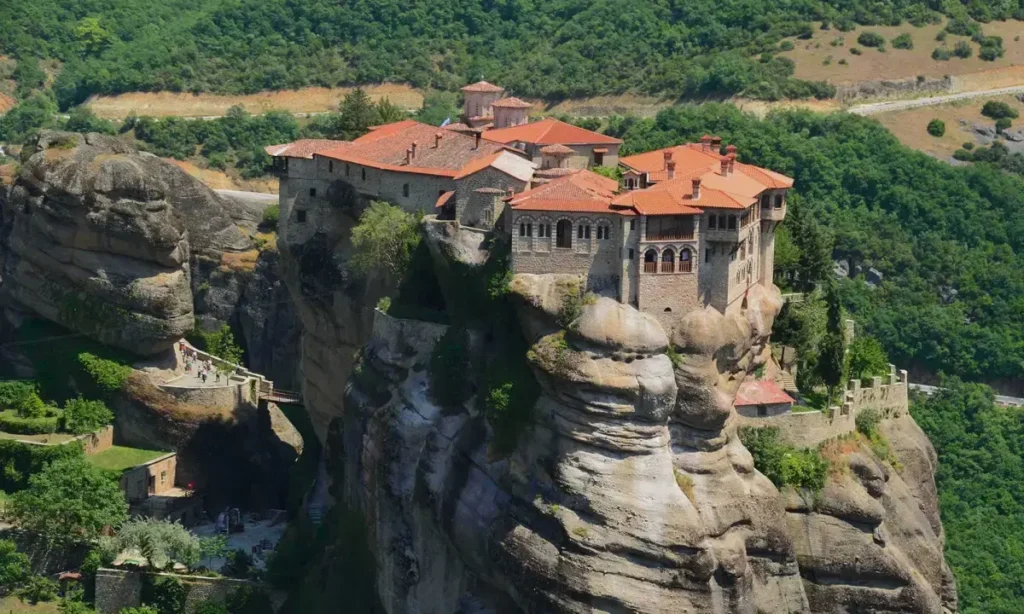
Meteora, a UNESCO World Heritage Site in central Greece, is a surreal landscape where monasteries perch atop towering rock pillars. This spiritual haven combines natural beauty with cultural significance, offering a unique experience for first-time visitors.
Why Visit Meteora?
The monasteries, built between the 14th and 16th centuries, seem to defy gravity, blending seamlessly with the dramatic cliffs. Meteora’s serene atmosphere and panoramic views make it a haven for those seeking peace and wonder.
Must-See Spots in Meteora
- Great Meteoron Monastery: The largest and oldest monastery, offering stunning views and a museum with religious artifacts.
- Varlaam Monastery: Known for its frescoes and accessible location, this monastery is a great starting point for visitors.
- Roussanou Monastery: A smaller, nun-inhabited monastery with a peaceful courtyard and breathtaking vistas.
- Holy Trinity Monastery: Famous for its appearance in a James Bond film, it requires a steep climb but rewards with incredible views.
- Sunset Rock: A popular spot for watching the sunset over the monasteries and cliffs, perfect for photography.
Practical Tips for Visiting Meteora
- Best Time to Visit: Spring (April–May) or autumn (September–October) for mild weather (15–22°C) and fewer tourists. Winter can be rainy, and summer is hot (up to 35°C).
- Transportation Options:
- By Train: From Athens or Thessaloniki to Kalambaka (4–5 hours, €15–30). Trains are comfortable but book early for reserved seats.
- By Car: A 4-hour drive from Athens (350 km) via the E75 highway. Parking is available near monasteries.
- In Meteora: Walking or hiking trails connect monasteries, but a car or driver is ideal for covering more ground (€80–120/day for a private driver).
- Recommended Duration: 2–3 days to visit all six active monasteries and enjoy hiking or photography.
- Hiring a Driver: Local drivers familiar with Meteora’s winding roads can be hired through hotels or agencies in Kalambaka. Confirm the itinerary in advance to include all desired monasteries.
- Respecting Local Customs: Dress conservatively (long skirts or pants, covered shoulders). Women may need to wear provided skirts at monastery entrances. Photography is restricted inside some monasteries, so ask permission.
- Additional Tips:
- Wear comfortable shoes for hiking and climbing monastery steps (some have 100–300 steps).
- Bring water and snacks, as facilities are limited near monasteries.
- Visit early in the morning to avoid crowds and heat.
| Monastery | Entry Fee | Steps to Climb | Highlights |
|---|---|---|---|
| Great Meteoron | €3 | ~150 | Museum, Views |
| Varlaam | €3 | ~100 | Frescoes |
| Roussanou | €3 | ~50 | Peaceful Courtyard |
| Holy Trinity | €3 | ~140 | Scenic Views |
3. Mykonos: The Island of the Winds
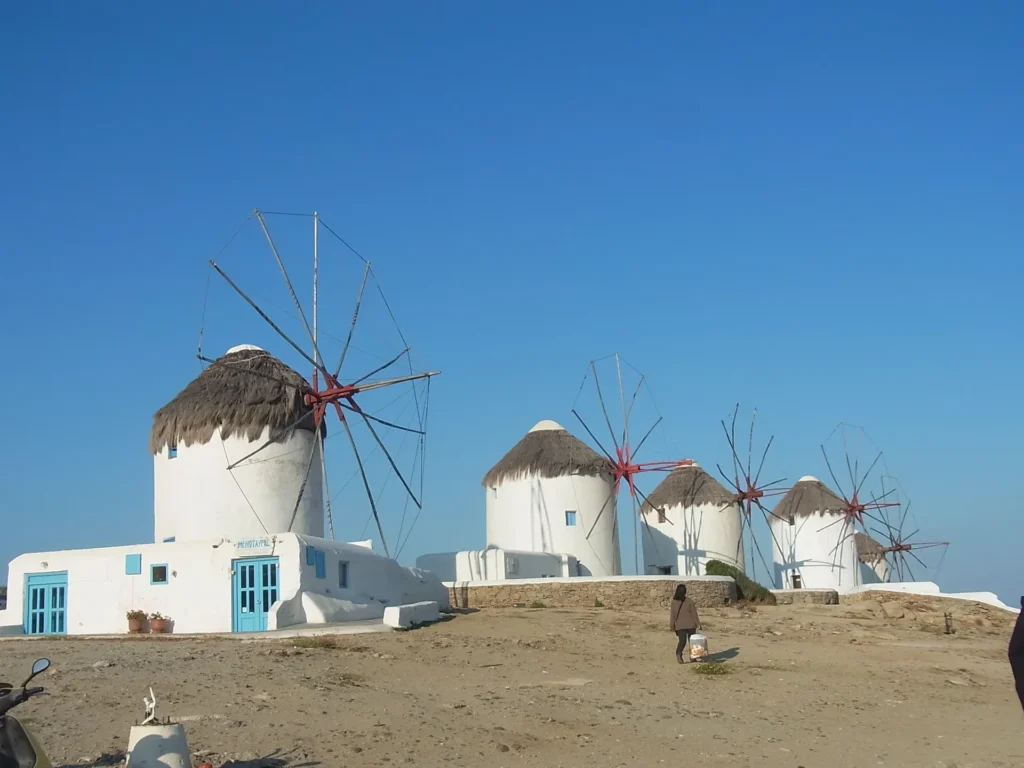
Mykonos is a vibrant Cycladic island known for its lively nightlife, picturesque towns, and stunning beaches. It’s a perfect blend of traditional Greek charm and modern luxury, ideal for first-time visitors seeking both relaxation and excitement.
Why Visit Mykonos?
Mykonos offers a dynamic mix of whitewashed architecture, turquoise waters, and a cosmopolitan vibe. Its iconic windmills, bustling beach clubs, and proximity to the archaeological island of Delos make it a versatile destination.
Must-See Spots in Mykonos
- Mykonos Town (Chora): A maze of whitewashed streets with colorful bougainvillea, shops, and cafes. Don’t miss the iconic windmills for photos.
- Paradise Beach: Famous for its beach parties, this spot is perfect for dancing and socializing by the sea.
- Delos Island: A short boat ride away, this UNESCO site is one of Greece’s most important archaeological treasures, featuring ancient ruins and temples.
- Little Venice: A charming area where buildings sit right on the water’s edge, ideal for sunset drinks.
- Psarou Beach: A quieter, upscale beach with crystal-clear waters and luxury beach clubs.
Practical Tips for Visiting Mykonos
- Best Time to Visit: May–June or September for warm weather (22–28°C) and fewer crowds. July–August is peak party season but crowded and expensive.
- Transportation Options:
- By Air: Fly into Mykonos Airport (JMK) from Athens (40 minutes) or international hubs.
- By Ferry: Ferries from Piraeus or Rafina take 2.5–5 hours, depending on the type.
- On the Island: Scooters or ATVs (€20–50/day) are popular for exploring. Buses connect Mykonos Town to beaches (€2–3 per ride). Taxis are scarce, so book ahead.
- Recommended Duration: 3–4 days to enjoy beaches, nightlife, and a day trip to Delos.
- Hiring a Driver: Private drivers cost €80–120/day and are useful for visiting multiple beaches or Delos. Arrange through hotels or local agencies.
- Respecting Local Customs: Dress casually but respectfully in Mykonos Town, especially near churches. Avoid excessive noise in residential areas, particularly late at night.
- Additional Tips:
- Book Delos boat tours in advance (€20–50, including entry fees).
- Wear sunscreen and stay hydrated, as beach days can be intense.
- Explore Chora in the morning to avoid midday crowds.
| Activity | Estimated Cost | Time Required | Best For |
|---|---|---|---|
| Delos Day Trip | €20–50 | 4–5 hours | History, Culture |
| Paradise Beach Party | Free (drinks extra) | 3–5 hours | Nightlife, Socializing |
| Chora Exploration | Free | 2–3 hours | Shopping, Photography |
4. Crete: The Land of Legends
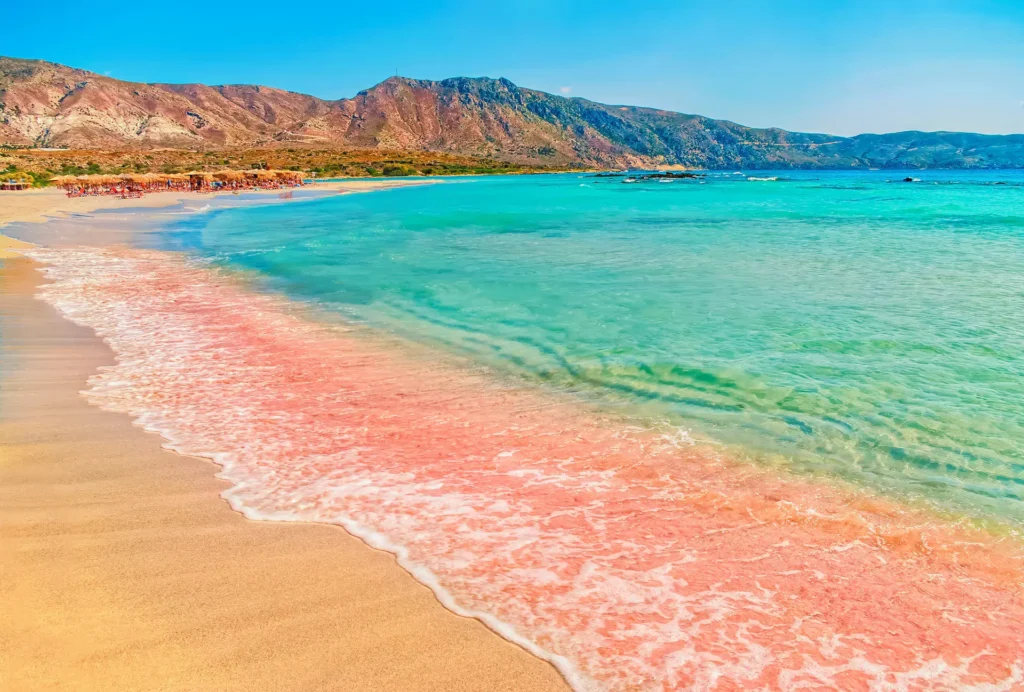
Crete, Greece’s largest island, is a treasure trove of diverse landscapes, from sandy beaches to rugged mountains, and a rich history tied to the Minoan civilization. It’s a destination that caters to every traveler’s interests.
Why Visit Crete?
Crete’s appeal lies in its variety: ancient ruins, stunning beaches, and vibrant culture. Whether you’re hiking gorges, exploring palaces, or relaxing on pink-sand beaches, Crete delivers unforgettable experiences.
Must-See Spots in Crete
- Palace of Knossos: The heart of the Minoan civilization, this archaeological site features colorful frescoes and a labyrinth linked to the Minotaur myth.
- Elafonissi Beach: Famous for its pink sand and turquoise waters, this beach is a paradise for relaxation and swimming.
- Samaria Gorge: A 16-km hike through one of Europe’s longest gorges, offering dramatic scenery and a rewarding challenge.
- Chania Old Town: A charming Venetian-era town with narrow streets, waterfront restaurants, and a historic lighthouse.
- Rethymnon Fortezza: A 16th-century fortress with panoramic views of the city and sea.
Practical Tips for Visiting Crete
- Best Time to Visit: April–June or September–October for mild weather (20–26°C) and fewer tourists. Summer is hot (up to 32°C), and winter is rainy.
- Transportation Options:
- By Air: Fly into Chania (CHQ) or Heraklion (HER) from Athens (1 hour) or Europe.
- By Ferry: Overnight ferries from Piraeus to Chania or Heraklion (8–10 hours, €30–60).
- On the Island: Rent a car (€30–50/day) for flexibility, as buses (€2–10) don’t cover all sites. Taxis are available but costly for long distances.
- Recommended Duration: 5–7 days to explore both eastern (Knossos, Elafonissi) and western (Chania, Samaria) Crete.
- Hiring a Driver: Private drivers (€100–150/day) are ideal for covering distant sites like Samaria Gorge. Book through local agencies or hotels.
- Respecting Local Customs: Dress modestly at archaeological sites and churches. Be mindful of local siesta hours (2–5 PM) when shops may close.
- Additional Tips:
- Book Samaria Gorge tours in advance (€30–50, including transport).
- Wear sturdy hiking boots for the gorge and bring plenty of water.
- Try local dishes like dakos and lamb with stamnagathi greens at tavernas.
| Activity | Estimated Cost | Time Required | Best For |
|---|---|---|---|
| Palace of Knossos | €15 | 2–3 hours | History, Culture |
| Samaria Gorge Hike | €30–50 (guided) | 6–8 hours | Adventure, Nature |
| Elafonissi Beach | Free | 3–5 hours | Relaxation, Swimming |
5. Zakynthos: The Flower of the East
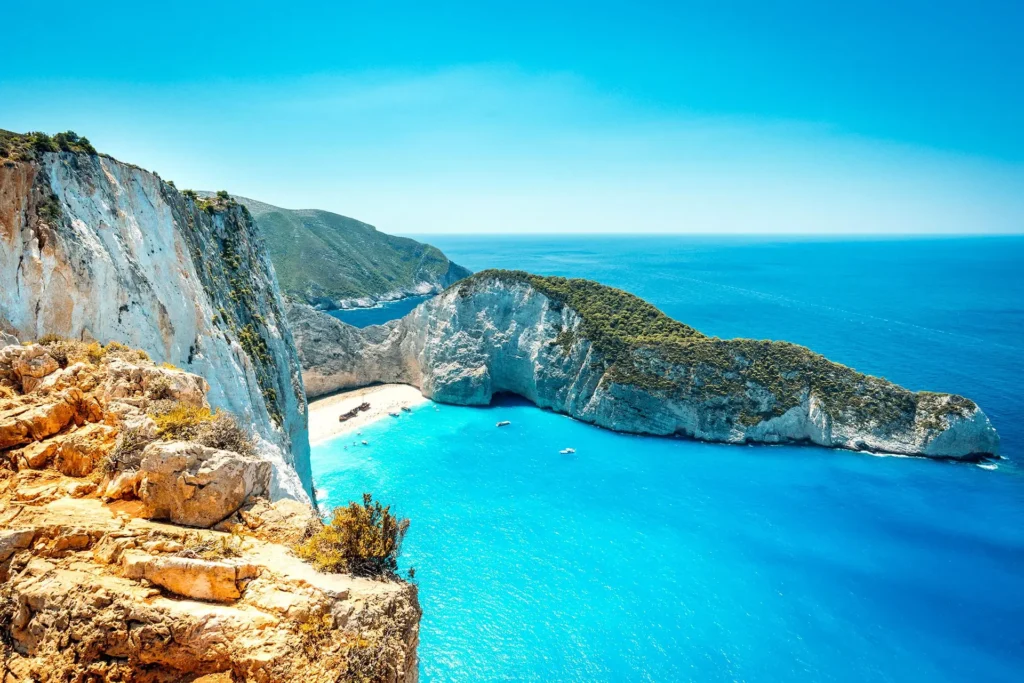
Zakynthos, an Ionian island, is renowned for its dramatic cliffs, turquoise waters, and the iconic Navagio Beach. Its natural beauty and relaxed vibe make it a must for first-time visitors.
Why Visit Zakynthos?
Zakynthos combines stunning landscapes with unique attractions like sea turtle sightings and glowing blue caves. It’s perfect for nature lovers and those seeking Instagram-worthy moments.
Must-See Spots in Zakynthos
- Navagio Beach (Shipwreck Beach): Accessible only by boat, this beach features a rusted shipwreck framed by white sand and towering cliffs.
- Blue Caves: A series of sea caves where sunlight creates a magical blue glow, ideal for boat tours and snorkeling.
- Laganas Bay: A hotspot for spotting endangered loggerhead sea turtles on boat tours.
- Bochali Village: Offers panoramic views of Zakynthos Town and the Ionian Sea, with charming cafes.
- Keri Caves: Another stunning cave system accessible by boat, perfect for swimming and exploring.
Practical Tips for Visiting Zakynthos
- Best Time to Visit: May–June or September for warm weather (22–28°C) and fewer crowds. July–August is busy with higher prices.
- Transportation Options:
- By Air: Fly into Zakynthos Airport (ZTH) from Athens (1 hour) or European cities.
- By Ferry: Ferries from Kyllini (Peloponnese) take 1.5 hours (€10–15).
- On the Island: Rent a car or scooter (€25–50/day) for flexibility. Buses connect Zakynthos Town to Laganas and other areas (€2–5).
- Recommended Duration: 3–4 days to visit Navagio, Blue Caves, and enjoy beach time.
- Hiring a Driver: Private drivers (€80–120/day) are useful for inland exploration. Boat tours (€20–40) are better for coastal sites like Navagio.
- Respecting Local Customs: Avoid disturbing sea turtles during boat tours; follow guides’ instructions. Dress casually but respectfully in villages.
- Additional Tips:
- Book Navagio Beach boat tours early, as they fill up fast (€20–30).
- Wear water shoes for rocky beaches and caves.
- Try local specialties like ladotyri (cheese) and mandolato (nougat).
| Activity | Estimated Cost | Time Required | Best For |
|---|---|---|---|
| Navagio Beach Boat Tour | €20–30 | 3–4 hours | Photography, Swimming |
| Blue Caves Snorkeling | €15–25 | 2–3 hours | Adventure, Nature |
| Turtle Spotting in Laganas | €20–40 | 2–3 hours | Wildlife |
Planning Your Greek Adventure: General Tips
Best Time to Visit Greece
- Spring (April–June): Ideal for mild weather, blooming landscapes, and fewer crowds. Perfect for hiking and sightseeing.
- Autumn (September–October): Warm but less crowded than summer, with pleasant sea temperatures for swimming.
- Summer (July–August): Peak season with vibrant nightlife but hot weather and crowds. Book everything in advance.
- Winter (November–March): Quiet but rainy, with some sites closed. Best for budget travelers and indoor attractions like museums.
Getting Around Greece
- Flights: Domestic flights between Athens and islands like Santorini, Mykonos, Crete, and Zakynthos are quick (45–60 minutes, €50–150).
- Ferries: Connect mainland ports (Piraeus, Rafina) to islands. Fast ferries are pricier but save time (€20–80).
- Car Rentals: Available on most islands and mainland (€25–60/day). Book through reputable agencies like Avis or local providers.
- Public Transport: Buses and trains are affordable but less flexible for remote sites. Use apps like Omio for schedules.
- Hiring Drivers: Ideal for day trips to multiple sites. Costs vary (€80–150/day). Always verify licensing and agree on itineraries upfront.
Respecting Greek Culture and Customs
- Dress Code: Wear modest clothing (covered shoulders and knees) at religious sites like churches and monasteries. Carry a scarf or shawl for convenience.
- Etiquette: Greet locals with a friendly “Kalimera” (good morning) or “Kalispera” (good evening). Tipping 5–10% at restaurants is appreciated but not mandatory.
- Environmental Respect: Avoid littering, especially on beaches, and follow guidelines for protecting wildlife like sea turtles.
- Photography: Ask permission before photographing locals or inside religious sites. Drones may require permits at archaeological sites.
Budgeting for Your Trip
| Expense | Estimated Cost (per day) | Notes |
|---|---|---|
| Accommodation | €50–150 | Budget hotels to mid-range Airbnbs |
| Meals | €20–50 | Tavernas and street food are affordable |
| Transport | €10–50 | Buses, ferries, or car rentals |
| Activities | €10–50 | Entry fees, tours, and boat trips |
Sample Itinerary for First-Time Visitors (10 Days)
- Days 1–2: Athens – Explore the Acropolis, Parthenon, and Plaka district.
- Days 3–5: Santorini – Visit Oia, Fira, Red Beach, and Akrotiri.
- Days 6–7: Mykonos – Enjoy Chora, Paradise Beach, and a Delos day trip.
- Days 8–9: Crete – Tour Knossos, Elafonissi, and Chania Old Town.
- Day 10: Zakynthos – Visit Navagio Beach and Blue Caves.
Conclusion
Greece is a destination that weaves together history, natural beauty, and vibrant culture into an unforgettable tapestry. From the sun-drenched cliffs of Santorini to the spiritual heights of Meteora, each location offers a unique experience that will leave you with lifelong memories.
As a first-time visitor, use this guide to plan your trip with confidence, ensuring you balance exploration with relaxation. Embrace the Greek hospitality, savor local cuisine, and immerse yourself in the timeless beauty of this Mediterranean gem. Your Greek adventure awaits—start packing!

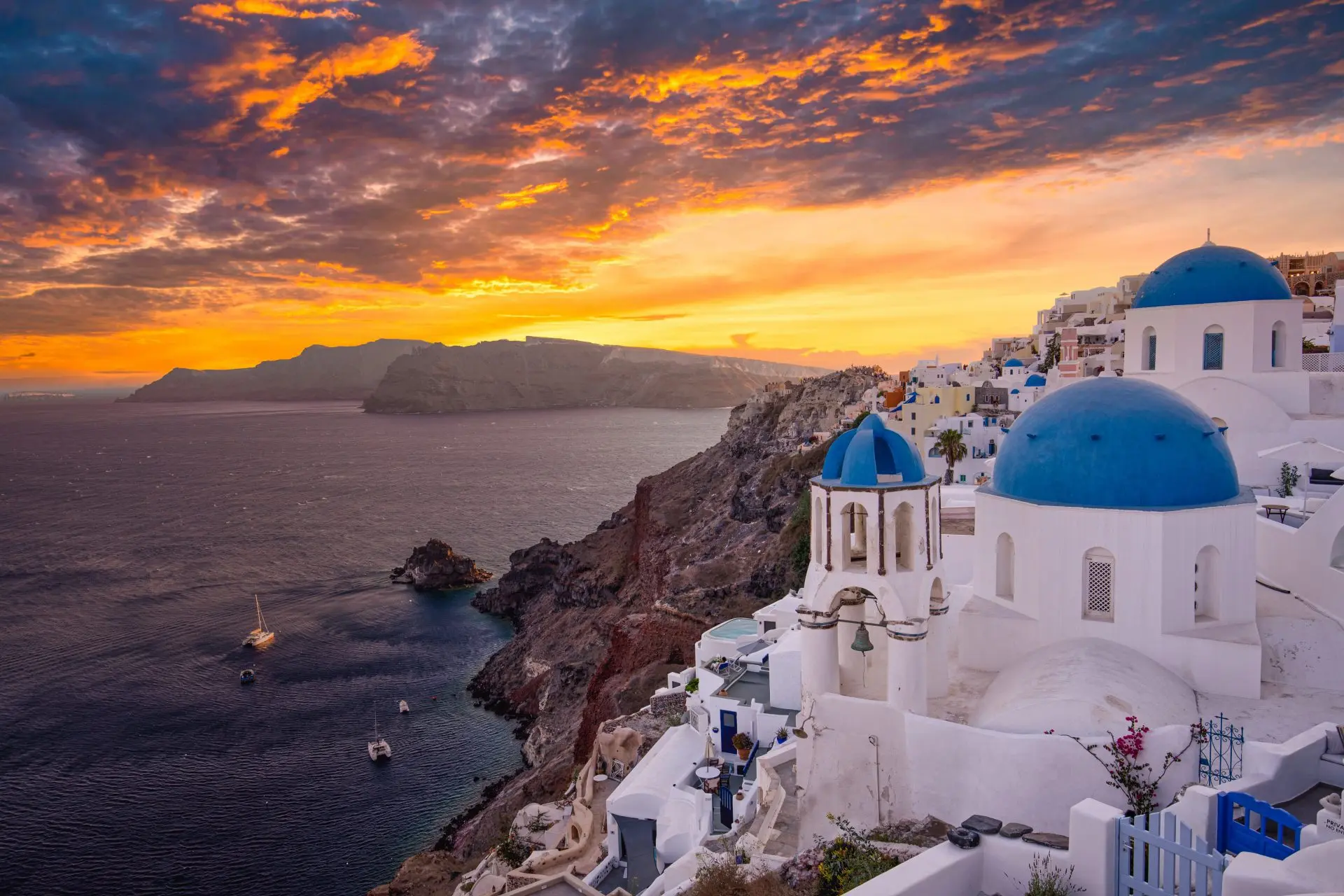
Leave a Reply